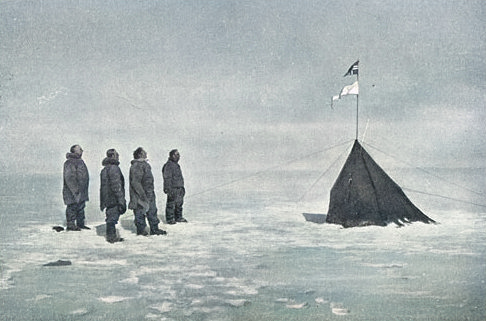
Roald Amundsen and his crew looking at the Norwegian flag at the South Pole, 1911
On December 14, 1911, Norwegian explorer Roald Amundsen and his expedition were the first to reach the geographic south pole, only five weeks ahead of a British party led by Robert Falcon Scott.[3]
Roald Amundsen Background
Amundsen was the youngest of four sons of shipowner and captain Jens Ingebrigt Amundsen (1820-1886)[1] and his wife Hanne Henrikke Gustava (née Sahlquist 1837-1893). Already during his childhood, Roald Amundsen was interested in the stories of discoverer and explorers. Especially travels to the polar regions fascinated him so much that he put himself into conditions like in polar areas as a young boy. Along with his friends, he hiked through the mountains in the winter for days while his grades decreased with every adventure. Amundsen enrolled at the university in order to study zoology, philosophy, and several languages to satisfy his mother. But as soon as she passed away, he dropped out, started a life on the sea and visited numerous glaciers in Norway.
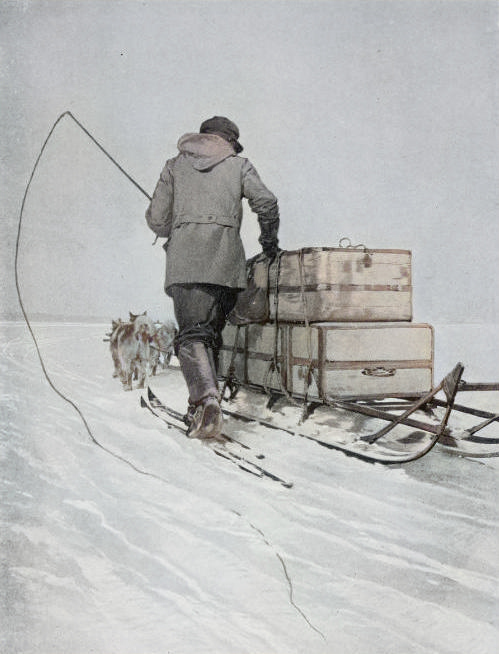
One of the men with a dog team and sledge on the Barrier in early 1911
Belgica-Expedition
In 1896, he took part in the Belgica-Expedition into the Antarctica. After returning from his first expeditions, Amundsen traveled around Europe by bike and learned new measuring techniques by the physician Georg von Neumayer. After another expedition in 1903, Amundsen turned into a national hero. Shortly after, the explorer began planning an expedition to the north-pole. The plan was to discover the north-pole and be stuck in the ice for over five years. He received support by the government but soon a message reached him, saying that Cook and Peary achieved this goal already.
South Pole
Shortly after, the adventurer decided to make his way all the way down to the south pole, but the new plan was kept secretly because he knew of Robert Scott’s expedition. He did not even tell the Norwegian government or even his crew about his plans, his brother was given the task to inform everyone about the changed goals after take off.
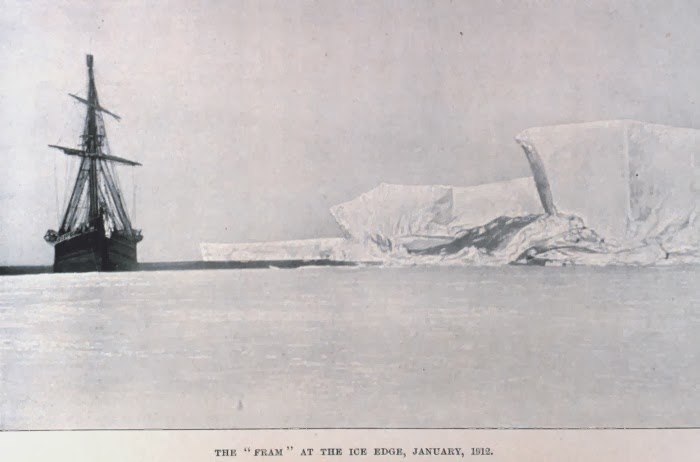
The “Fram” at the ice edge, January 1912
During his expedition, the main goal was to reach the south pole in contrast to Scott, who had numerous scientific objectives. At the beginning of the journey, the crew did not get along very well being very confused with the captain’s orders, which changed right after they were told about the changed plans. During a stop at Madeira, Amundsen let Robert Scott know about his plans and left for the south pole as soon as possible. But it was too early. The temperatures dropped to -56°C and they had to wait for the antarctic spring. In October, Amundsen and four further members of the crew left for the south pole. On their way, the men named many glaciers and finally managed to reach the south pole, five weeks ahead of Robert Scott, who was still in the middle of his last adventure. Amundsen’s men flagged the pole and it was later found that this was quite accurate, only being 180m off the mark.
Aftermath
Amundsen’s success was highly celebrated in Norway, but when the English found out that Robert Scott and his men froze to death, they openly denounced the Norwegian explorer. In the following years, Amundsen published several works describing his journey and gave lectures, but soon took of for further adventures. He started using aircraft for his expeditions, but during a rescue mission for Umberto Nobile, the plane crashed and Roald Amundsen died.[6]
Works by Roald Amundsen:
- The North-West Passage; Being the Record of a Voyage of Exploration of the Ship “Gjöa”. New York: E.P. Dutton and Co. 1908.
- South Pole: An Account of the Norwegian Antarctic Expedition in the “Fram”. 1912.
- Nordost Passagen: Maudfaerden Langs Asiens Kyst 1918–1920. Kristiania: Gyldendal. 1921.
- Our Polar Flight: The Amundsen–Ellsworth Polar Flight. New York: Dodd, Mead. 1926.
- The First Flight Across the Polar Sea. London: Hutchinson. 1927.
- My Life as an Explorer. New York: Doubleday. 1927.
Scott, Amundsen and Science: 100th Anniversary – Ed Larson (SETI Talks), [8]
References and Further Reading:
- [1] Roald Amundsen article at south-pole.com
- [2] Roald Amundsen and the 1925 North Pole Expedition
- [3] Robert Scott’s Last Expedition, SciHi Blog
- [4] Ernest Shackleton and his South Pole Expeditions, SciHi Blog
- [5] The Nimrod Expedition and the Magnetic South Pole, SciHi Blog
- [6] Umberto Nobile and his Airships, SciHi Blog
- [7] Roald Amundsen at Wikidata
- [8] Scott, Amundsen and Science: 100th Anniversary – Ed Larson (SETI Talks), 2012. SETI Institute @ youtube
- [9] Karpoff, Jonathan M. “Roald Amundsen: Essay prepared for The Encyclopedia of the Arctic”. University of Washington.
- [10] Kenneth P. Czech (12 June 2006). “Roald Amundsen and the 1925 North Pole Expedition”. Aviation History magazine.
- [11] Garth Cameron. From Pole to Pole: Roald Amundsen’s Journey in Flight. (New York, Skyhorse Publishing, 2014)
- [12] Hugo Decleir. Roald Amundsen’s Belgica Diary: the first Scientific Expedition to the Antarctic. (Erskine Press, 1999)
- [13] Timeline of Antarctic Explorers via DBpedia and Wikidata


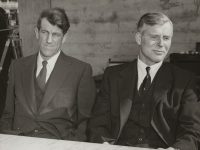
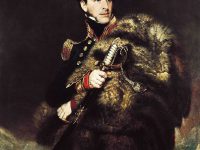


Pingback: Whewell’s Gazette: year 2, Vol. #23 | Whewell's Ghost
Pingback: Whewell’s Gazette: Year 03, Vol. #18 | Whewell's Ghost